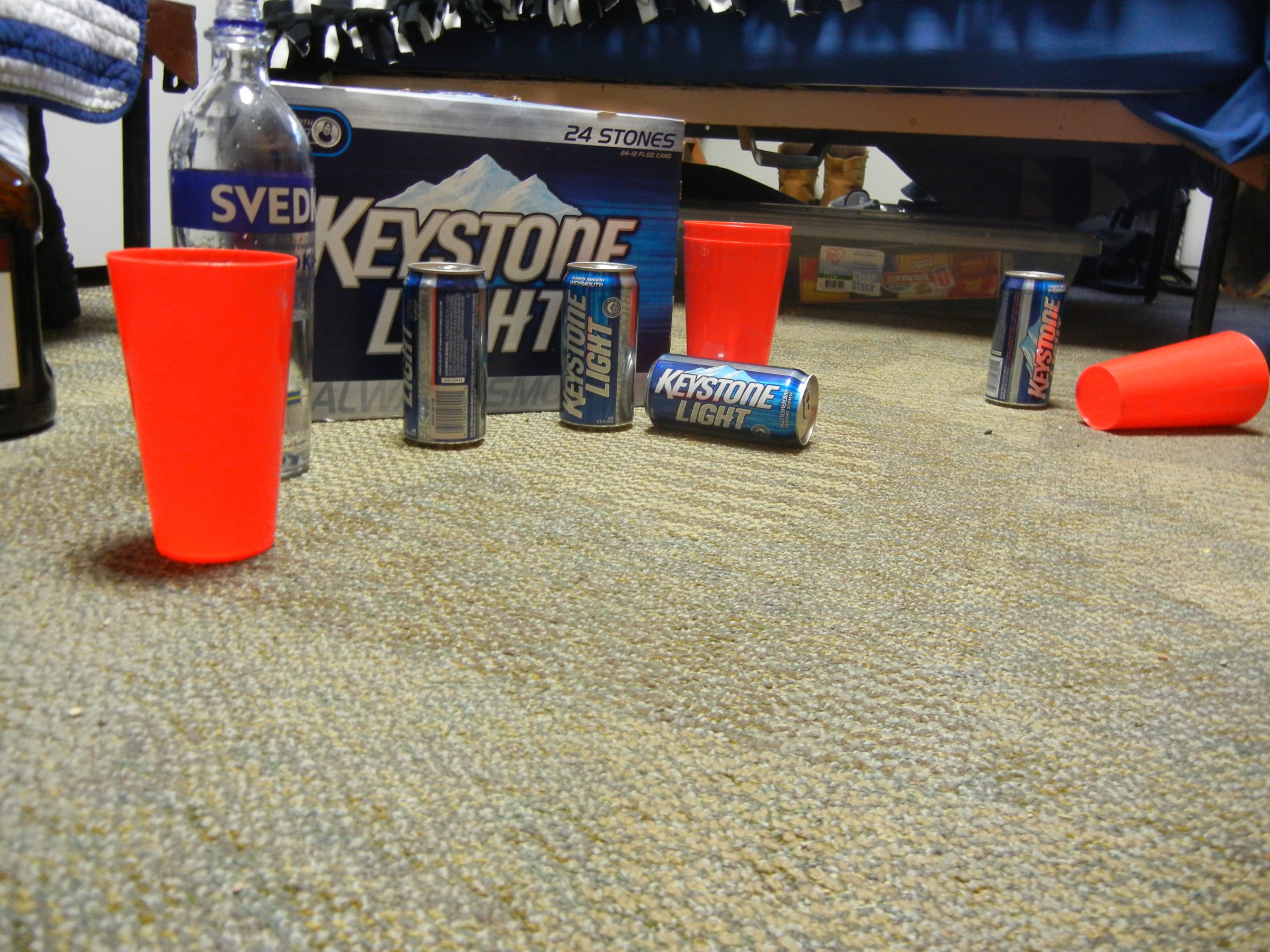The illumination of the incandescent lights lining the streets reveal the tango of Gustavus students, orchestrated by routine, on a Saturday night. A young man stumbling toward his next destination, two-stepping in the effort not to spill his open beer, women clad in outfits defying the chill of early February, cavorting in an attempt to keep pace, a lawn adorned in red and blue solo cups, waiting to be cleared for the necessity of reputation. Where institutions are blinded with pride, those incandescent lights witness all.
Abusive and underage drinking in college are significant public health problems, and they exact an enormous toll on the intellectual and social lives of students on campuses across the United States. While drinking at college has become a ritual that students often see as an integral part of their post secondary experience, it’s become a problem, often ignored by students. The reality is that attention to this problem across college campuses is imperative. Gustavus is no exception.
In March 2007, The National Center on Addiction and Substance Abuse (CASA) at Columbia University published the report Wasting the Best and the Brightest: Substance Abuse at America’s Colleges and Universities. This report revealed a semblance of decadent self-indulgence and a disquieting public health crisis on college campuses in the U.S.: the toleration of binge drinking.
While it’s been seven years since the report was published, and certain combative measures and policies have been established at universities, including Gustavus, the reality remains that institutions and their students have either aided or tolerated a college culture of alcohol abuse linked to poor student academic performance, behavior, and medical problems. By tolerating alcohol abuse as part of college culture, institutions have become part of the problem.
“The acceptance of the status quo of rampant alcohol abuse puts the best and the brightest, and therefore the nation’s future, in harm’s way,” the report said.
 Senior Patrick Sullivan knows all too well, the harm associated with neglecting alcohol abuse.
Senior Patrick Sullivan knows all too well, the harm associated with neglecting alcohol abuse.
“I had just come home for Christmas two years ago when my parents told me that one of my close friends had committed suicide. I always think of the last time I saw him. I knew he had an alcohol problem, and I couldn’t help him,” Sullivan said. “Sure enough, when the autopsy came back it revealed that he had been heavily intoxicated at the time, which is really difficult to think about, even today.”
Sullivan recalled times his friends had started arguments and fist fights due to intoxication, even incidents of driving under the influence. He also spoke about friends drinking so much that they lost the ability to know when to stop drinking.
These are problems often ignored by students, as drinking in college has become a rite of passage. Gustavus is far from a leading party school, but Vice President for Student Life and Dean of Students, JoNes VanHecke points out that statistics comparing the Fall of 2012 to the Fall of 2013 show an increase in the number of level two violations between the two semesters with level one having the largest number of violations/incidents compared to the other two levels during both semesters.
“Each student has to make individual decisions about consumption and use, weighing the consequences and their personal value system. Our goal, as a college, is to provide information, assistance, support and fun alternatives to aid students in making adult, responsible decisions,” VanHecke said.
CASA pointed out that the goal of a college cannot and should not simply stop there.
“These institutions have an obligation to confront the problem of campus substance abuse in order to maintain their academic credibility, to protect the health and safety of students on their campuses, and to preserve their financial resources from liability for injury and death of students as a result of foreseeable harm from the culture of alcohol abuse,” the report said.
However, the obligation cannot simply be put on the institution and its authorities. Behind the scenes at Gustavus, authorities talk relentlessly of possible measures to combat the rising incidents involved with alcohol consumption. Many ideas have been presented and many obstacles have stood in their way. Perhaps the largest obstacle is the lack of cooperation between students and the institution, not only to combat, but also to recognize the problem.
The first step is for Gustavus to recognize and accept responsibility for feigning blindness to a problem that manifests itself in very visible, public ways, like Case Day. Binge drinking cannot be viewed as a harmless rite of passage for college students. Instead of preserving the purity of the college name by disregarding the problem, we can move toward actually protecting the safety of students and atmosphere by raising awareness and taking responsibility as adults.

Thank you for taking the time to write this article Jaurdyn. I hope that you are able to spark some meaningful discussion about these troubling trends and the serious problems that may arise from them.
Well, all I can say is that I’m pumped for Case Day!! Classic example of someone who preaches on a topic they have no experience with. You’re better than that, Jaurdyn.